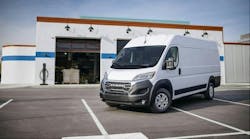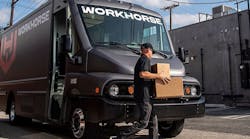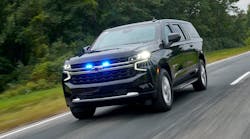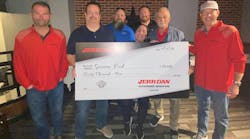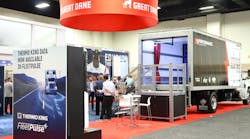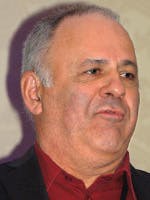WHEN Jean Magny was a boy growing up in Montreal, he delivered copies of a daily newspaper, La Presse, for $10 a week.
Times change. Dramatically. In a few years, there will be no home delivery of La Presse. The 131-year-old newspaper announced last September that it will end the weekday print edition in 2016 and make it available only in the digital edition.
He said that in today’s tightly integrated supply chains, the factory floor is still where the value is added in every manufacturing enterprise.
“It is essential to make the connection from the shop floor to the top floor where management decisions are made,” he said. “This connection must be very quick in response to the changes in the markets. The answer rests in bringing the shop floor into the limelight, and therein lies the opportunity for e-manufacturing.”
E-manufacturing is defined as a strategy that takes the e-business processes—such as build-to-order and reliability-centered maintenance—and produces guidelines for implementing plant systems. The e-manufacturing strategy takes the e-business and manufacturing strategies and creates a road map for system development and implementation in the plant.
Magny said there is a traditional disconnect in manufacturing between the shop floor—where production takes place—and the rest of the supply chain. But with the evolution of e-commerce, business managers are urged to respond and adapt to customer demand in a short period of time, attempting to balance demands for shorter lead times and controlled costs.
Magny said that many older manufacturing models still use pen and paper to track their manufacturing process—and that leaves too much room for error. Though it’s a step in the right direction that some manufacturers have adopted the use of work orders and barcode scanners to track materials and inventory, that is not e-manufacturing—as some plant managers believe it to be. He said work orders and barcode scanners do not help with the manufacturing process or provide benefits for the shop floor. The accounting department is the only beneficiary.
He said e-manufacturing is the next logical stage in the manufacturing evolution because it utilizes emerging technologies.
Stock manufacturers—who make defined models, have big production runs with fabrication, and then push for sales to happen—are not the best fit for e-manufacturing, but two others are: standard platform with options, and custom project.
Two key acronyms in e-manufac
turing:
• ERP (Enterprise Resource Planning). A business-management software, usually a suite of integrated applications, used by an organization to collect, store, manage, and interpret data from different activities: product planning and cost; manufacturing or service delivery; marketing and sales; inventory management; shipping and payment.
• MES (Manufacturing Execution System). They are computerized systems that track and document the transformation of raw materials to finished goods, providing the right information at the right time to show the decision-maker how the plant floor’s current conditions should be optimized to improve output. MES works in real time as multiple elements of the production process come together.
“Before MES, it was all about paper and time tracking,” Magny said. “There was a lot of added value in the shop but it’s still very disconnected. There’s a lack of visibility and collaboration. People are relying on a piece of paper someone gave them. If you need help, you typically ask help to a peer or to your boss who assigns someone else to help you without knowing the impact. You may go faster but you may slow down the plant.
“If a change occurs, then someone from the top floor must reprint the document, walk into the plant to take back the old one, and distribute again the information—until the next change. Drawings will show dimensions but instruction must be given on other piece of papers. If you are using a work order with a barcode, you typically know how many hours are done so far roughly, but it does not tell you if you are late or in advance based on what needs to be done.
“If you are using a work order with a barcode and you are not sharing the expected time per activity, then you cannot count on your staff to help you improve the process. If your staff is using a punch clock, the only thing you know is how much you will pay them with the expected results or not. As I am sure Greenpeace members would love to hear me say that we should go with less paper no matter what, the truth is that motivation will be from another angle.”
Magny said the success with this in a “line fabrication environment” is to: break down tasks per sector and allocate hours per task to balance the line; share to everybody the sectors that are late and in advance; ask for staff to inform the system of progression on tasks; and train the employees to remove bottlenecks by increasing capacity to “red zones.”
“For the Millennials, it’s not different than an ‘online game,’ ” he said. “As a team, they can know what is happening and they can overcome the enemy. Your team leaders are still required but the goal is to have a system that challenges itself. People in the office can see what’s happening from the monitor, and staff can also see with wide TV monitors in the plant.”
The MES Work Center Interface has many benefits: shows time left to complete the tasks; shows who is working in that sector; shows tasks progressions; drawings, instructions can be consulted; it allows traceability; and help can be requested to supervisors.
“Every sector has its own monitor; touch screen technology is quite useful there,” he said. “Multiple employees can be added per sector, and as they join, the sector’s capacity increases. The system reminds the team when the line will move next, and based on the work remaining and the size of the team, the system informs the team if they are in advance or late.
“On the main pane, the employees of Section B1 on Line B can see what is left to be done. As they are closing tasks, the remaining hours related to the sector is adjusted. Employees can ask for help. Employees can see drawings and instructions from the right pane.”
He said that if you’re looking to add an ERP/MES system, your staff will be asking, “What’s in it for me?”
“Without being not well-intentioned, someone’s objectives could be opposite to someone else,” he said. “Make sure to share your goals and make them the ultimate goal. Be careful of the ‘comfort’ illusion. To deliver faster, you may have to move away from ‘lean.’ To decrease cost, you may want to decrease your on time delivery. Your staff will take decision on the objective. If you ask them both, then you cannot predict.
“Our best resources have a lot of knowledge; they are busy and we cannot afford them to be hit by lottery. You can count on the consultants to share the best practices, to execute activities that you may never have to do again, to train your staff, but you cannot count on them to have authority over your staff. If your team is not available, is not doing their exercises, then the project will be postponed, training will be redone, and project cost will be higher than expected.
“When engaging into a project like this, you could have someone with ‘less experience’ to coordinate the activities internally, and that person should report to the top management team. This is a ‘real’ project and it will involve some changes in your processes.”
Issues:
• Where the system should be hosted?
“Everybody is talking about the cloud. Should we go that way? Again ask yourself, ‘What’s in it for me?’ The software company is asking that question and their answer is 37% more revenues over 10 years. After you validate that the infrastructure is OK, it’s like asking yourself, ‘Do I rent my car or I buy my car?’ As some companies are looking to put a step in the cloud, they are still stuck with having servers and PCs in the plant. It starts to pay when everything is there; not halfway in between.”
• I am concerned about my staff.
“Will they be able to use this? New employees and the next generation are looking for proper tools, to computers. If you do not do it for them, you are not helping them to succeed and you are not helping yourself down the road. Give yourself the capacity for growth. The better your instructions are, the fastest you can ramp up your new staff.”
• Money.
“I have money but no time. I have time to do it, but no money. You are in business to compete, and if you do give yourself the proper tools to compete, then just do not compete. It’s matter of time that companies looking to grow will have to implement these tools just to be compliant.”
NRC-Innovations in Telematics
Jeff Patten
National Research Council, Commercial Vehicle Group
Patten said “telematics” is a combination of the words telecommunications and informatics/informatique, as they relate to vehicles.
“The word telematics was first used in 1978 by French researchers,” he said. “It’s the act of sending, receiving, and storing information and data to control vehicle trajectory, speed and braking, or to monitor vehicle position or state. It can be vehicle-to-infrastructure (V2I) or vehicle-to-vehicle (V2V).
Specifically, telematics can be for: autonomous vehicles; truck/trailer tracking; fleet management; fuel consumption reduction; satellite navigation; wireless safety communication; intelligent vehicles; car-sharing; or insurance tracking/monitoring/rate adjusting.
He said in its simplest form, it is used to track the motion/location of any vehicle: speed, altitude and heading (GPS based); cargo shift; door positions; vibration and road conditions; fifth wheel connection; axle loading; and reefer status.
For reefers, it is used to monitor the temperature of food/pharmaceuticals in trailers and to give real time and data history. It is used for accidental food/drug spoilage and also includes tampering/crime.
Several RFID tags are placed near the food/pharmaceuticals, measuring temperature, moisture, light, shock, and tampering/theft.
It is used to monitor traffic conditions; control traffic flow; provide information to the public regarding construction, delays, accidents, and congestion; and reduce collisions using V2I and V2V.
All vehicles are equipped with on-board units. The vehicle transmits speed, position, and heading. All vehicles within a 10-second travel time receive these signals. An example: a vehicle traveling 100 km/h transmits with power to ~270 meters; a vehicle traveling 40 km/h transmits with power to ~110 meters.
In 5.9 GHz DSCR vehicle-to-vehicle applications for cooperative collision warning/avoidance: all vehicles use the information to calculate the probability of an incident; caution alert is sounded if 0.35g evasive maneuver is required to avoid a collision; warning alert is sounded if 0.50g avoidance is required. It’s similar to TCAS for commercial airplanes.
He said there are benefits because insurance companies now offer reduced premiums for drivers who drive defensively. Sensors and transmitters are mounted in the vehicle and measure certain metrics such as acceleration greater than 12 km/h/s and braking deceleration greater than 12 km/h/s. They are not used to monitor legal infractions or position.
By far the most complicated use of telematics is vehicle control, he said.
In order to help standardize the industry, the National Highway Traffic Safety Administration (NHTSA) has developed a set of definitions for autonomous vehicle technology. The definitions are broken down into five distinct categories:
• Level 0. No Automation: conventional cars with no more than passive warnings.
• Level 1. Function specific: ESC, RSC, Adaptive Cruise Control, but they must remain independent.
• Level 2. Combined function automation: Adaptive Cruise Control combined with lane centering but the human is the principal driver.
• Level 3. Self-driving: vehicle can drive itself but can give back to driver when required.
• Level 4. Full self-driving: no driver required.
Platooning is the best example of Level 3 automation, involving two or more trucks that are electronically coupled to one another with very close spacing, with a driver in each.
Potential advantages:
• Reduce aerodynamic drag due to vehicle spacing.
• Reduce fuel consumption and GHG emissions.
• Tested fuel savings of between 5% to 21%.
• Could reduce chain reaction collisions.
• Smoother traffic flow.
• Increased traffic density.
• Increased freight productivity.
How it works: Sensors are mounted on all vehicles. Many vehicles are connected using “electronic tow bars.” The lead vehicle has a trained professional driver who is always driving the vehicle (Level 2). All other vehicles in the platoon have a driver who monitors systems and can take over (Level 3). Any vehicle can depart or join the platoon at any time. Vehicle spacing as low as 10 meters is possible.
Adaptive Cruise Control uses radar or LiDar to adjust the speed of the trailing vehicle based on the position and speed of the vehicle ahead of it.
Predictive Cruise Control is more advanced than adaptive cruise control. It uses information from 3D maps and current traffic conditions and optimizes speed based on upcoming grades (speeds up ahead of an upslope) and traffic conditions. It’s useful to manage a gap in a platoon with various vehicle weights.
Cooperative Adaptive Cruise Control is the same as previous systems, with the addition of V2V sensors that consider all the vehicles in the platoon. The system must be extremely fast in order to allow extremely close spacing between vehicles. It improves the stability and consistency of the platoon, and highly evolved systems may include vehicle weight.
Introducing OnCommand Connection
Lucien Godin
Navistar Canada
Godin said OnCommand Connection (OCC) is a remote diagnostic process focused on improving the following areas: vehicle uptime (scheduled versus unscheduled); total cost of ownership; and communications (customers, dealers, international).
OnCommand Connection accomplishes these improvements through:
• Open architecture. It’s able to integrate with multiple telematics providers, component suppliers, and a customer’s business system.
• All makes in trucks and engines. It’s able to support the entire fleet.
• Online and mobile applications. Data is laid out in an actionable format.
• GPS enables mapping. It’s interactive with multiple layers.
As more sensors are added to vehicles, they can communicate their health via Diagnostics Trouble Codes (DTCs) over telematics vendor communication platforms in real time.
He said Navistar’s architecture strategy is not married to a particular telematics vendor and thus can provide remote diagnostics with almost any of them. It integrates the current telematics vendor you already have and allows Navistar to help you with the data the company understands. ♦
